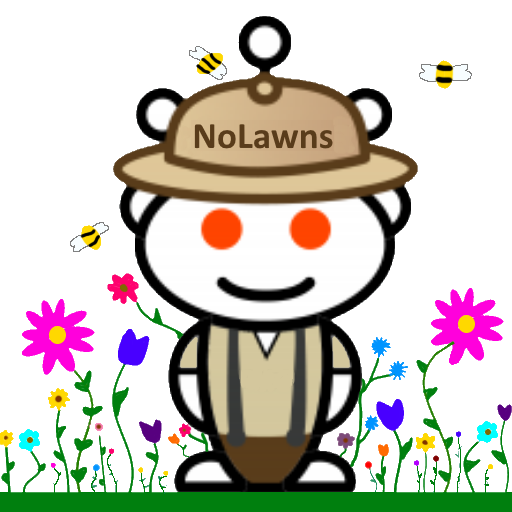

I haven’t tested/verified this myself but I’ve heard that mycelium grows particularly well on millet and rye berries. Might be a couple to add into your experimenting.


I haven’t tested/verified this myself but I’ve heard that mycelium grows particularly well on millet and rye berries. Might be a couple to add into your experimenting.


Where I’m at, we’re actually getting a decent amount of solar, but unfortunately the power district is building the solar fields over some remnant tallgrass prairie, probably since it’s cheaper than buying agricultural or residential land. This sucks since we’ve destroyed 98% of all the tallgrass prairie in the US, which makes it one of the most endangered biomes in the world, which is extra sucky since tallgrass prairie is one the most effective biomes at sequestering carbon, much more than even forests/woodlands.


A major overlooked ecological value of parasites and the diseases they carry is population control. We all hate them and the off chance of getting a serious disease from them, but they do help keep populations of mammals in control. Also, some mosquitoes are pollinators.
Generally, if the question is “Should we eradicate native species?”, my answer would be no regardless of species because ecology is extremely complex and we likely will never exactly understand the impact of voluntary species eradication until after we do it.
There are non-native mosquitoes and ticks though, eradication of those should be okay unless maybe if they’ve been naturalized for a long time. Less severe population control near urban areas is probably the most reasonable compromise between not disturbing native ecology and human comfort.


Yes, you would have to densely broadcast seed/plant plugs with native prairie species or noxious and invasive stuff will take over initially. And you would have to kill all the grass, either with a spray (which helps keep the existing invasive seed bank down), or till or sod cut or solarize or smother the grass.
If you replant relatively quickly, erosion won’t be too much of a concern as the natives will establish fast enough to stabilize the soil. Long term, the natives will actually reduce erosion compared to lawn grass. You don’t need to burn in an urban setting, mowing once or twice a year (once in earlier spring and maybe again in early summer to help natives out compete invasives) is gonna be enough generally.


Yes, most wasp species are good pollinators since adults are generally nectar feeders. They’re not as efficient as bees since they’re not as hairy, but they pollinate a lot nonetheless. Some wasps are actually specialist pollinators for certain plants (see figs and fig wasps). Wasps also serve other important roles, including population control for other arthropods since they hunt and parasitize them.
Wasps are also generally very non-aggressive. Hornets, yellowjackets, and paper wasps give the rest of the wasps a bad name, but a large amount of wasps can’t even sting, and another very large amount can sting but are very non-aggresive (solitary hunting wasps are a good example of this). I’d say even paper wasps are really non-aggressive unless you get too close to the nest, and they just tend to make their nests close to where people often go near.


I’ve been trying to get a photo of this wasp for a while. Glad I finally got lucky enough for it to stay still for a bit.


Amazing. Any ideas on fungal species? Maybe Beauveria?


Insect was inside a decayed hardwood log. Unsure of insect species but IIRC tenuipes usually attacks Lepidopterans
deleted by creator


May have triple posted this due to some issues on KBin, I tried deleting the other two.
One of the eastern North American Destroying Angel species. Found on a ridge in a hickory-oak woodland in southeast Nebraska.
We’ve got a vegetable garden going with tomatoes, pepper, kale, cabbage, onions, and eggplants.
Also got a new pollinator garden bed started this year with Butterfly milkweed, a few different species of aster, sunflowers, blanket flower, rattlesnake master, goldenrod, purple prairie clover, Mexican hat coneflower, and some blazing star. Also scattered some sage and prairie clover seeds in a few other spots on our property. I’ve been sitting out documenting the various wasps and bees that visit us. We’re also planning on harvesting seeds from stuff and giving them away/starting plants from them next spring to give away.
Got some logs from our neighbors that I’ll drill some holes in for the mason bees.
We’ve got some old furniture that we don’t want anymore that I’m trying to touch up a bit before giving it away to a local charity that gives people coming out of the foster system stuff like furniture and appliances to help them land on their feet.


They probably have a wall outside the garage door.
In my experience, with both coding and natural sciences, a slightly incorrect answer that you attempt to apply, realize is wrong in some way during initial testing/analysis, then you tweak until it’s correct, is very useful, especially compared to not receiving any answer or being ridiculed by internet randos.
Nothing on bugguide so far except confirming it’s in Sesiidae. On my iNat record, I had a Sesiidae expert ID it as Vitacea polistiformis
That’s also the taxon that I came to last night when I was trying to figure it out. Maybe! I have it up on bugguide too now.
Found it in Northeast Nebraska hanging out on a plant on the edge of a tallgrass prairie and woodland while surveying for mycorhizal fungi. Thankfully I like taking pictures of wasps since I 100% thought this was a Polistes, otherwise I might have just walked on.
If anyone has any idea on an ID, it’d be much appreciated.
Nearest tree was a spruce of some sort, with a blue spruce and a couple linden trees also relatively nearby. Thinking Hortiboletus rubellus or Boletus harrisonii, but very unsure.


It was flying around to different spots and then getting into this position for a bit, then moving to a different spot. I think it was trying to find a suitable spot to sleep.
Didn’t use a tripod so I didn’t get the same angle/framing. Found near some burr oaks in a hardwood woodland in eastern Nebraska. UV is 365nm wavelength
Didn’t read the whole article, but the whole thing reads as very anthropocentric to me. It seems that the entire discussion is around human/Native relationships to trees and whether we’ve grieved/learned our lesson enough. Which put humans entirely at the center of the narrative, when the narrative should primarily be around the tree’s ecological relationships to all of nature. Hell, the article even mentions moth species that have gone extinct due to the downfall of the tree but fails to recognize that maybe humans shouldn’t be the center or the universe in this narrative.